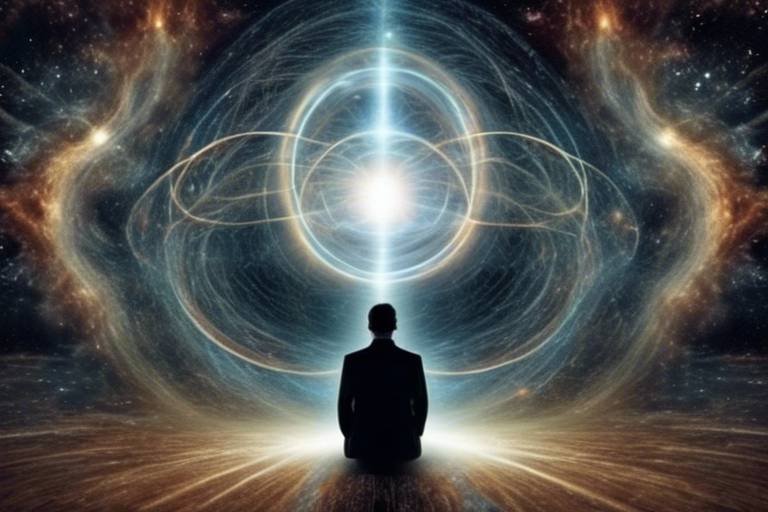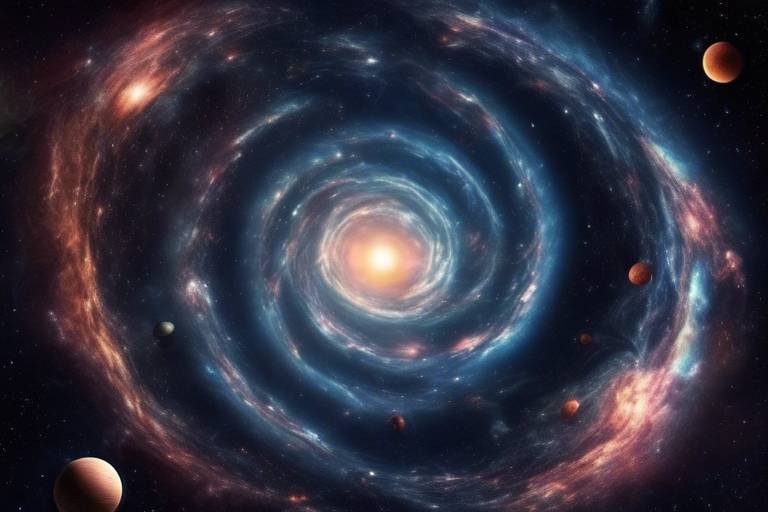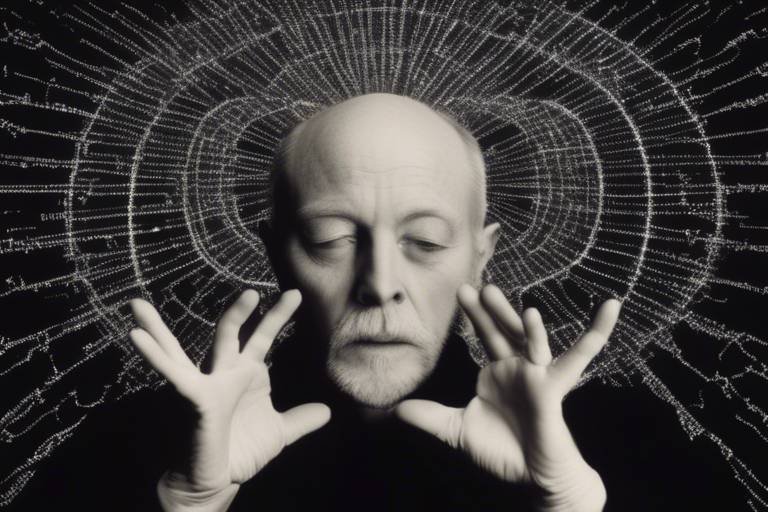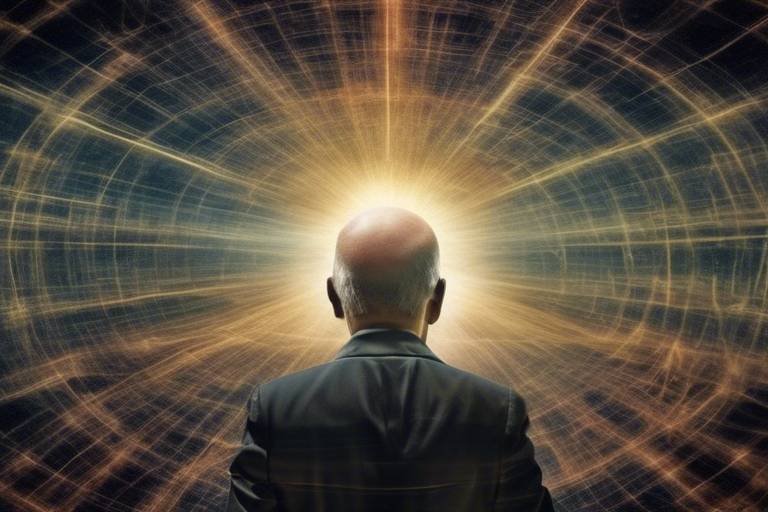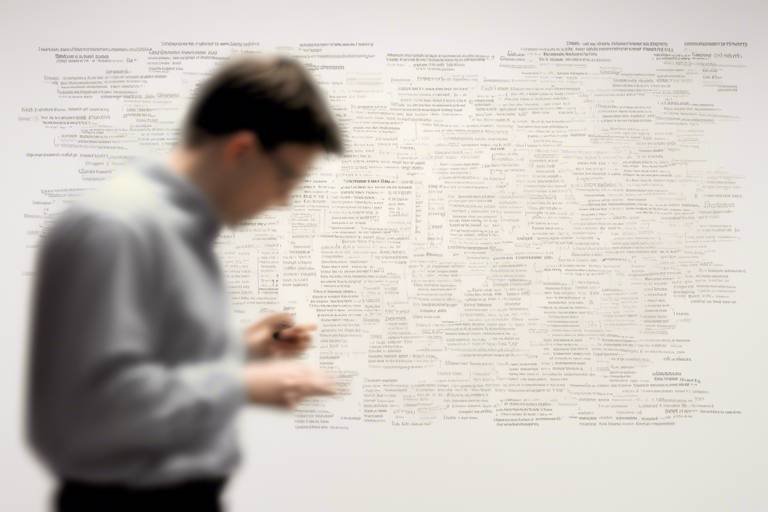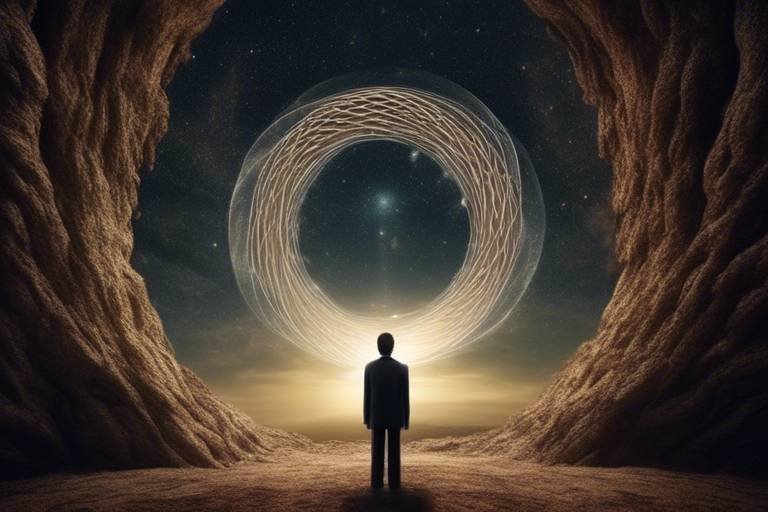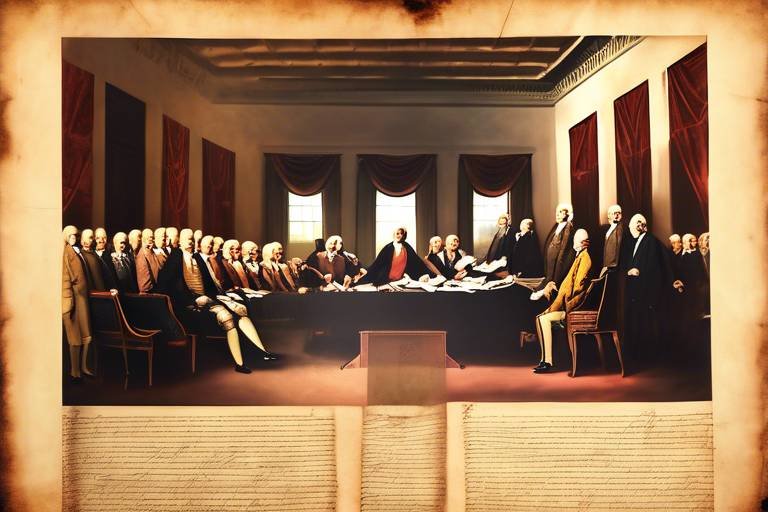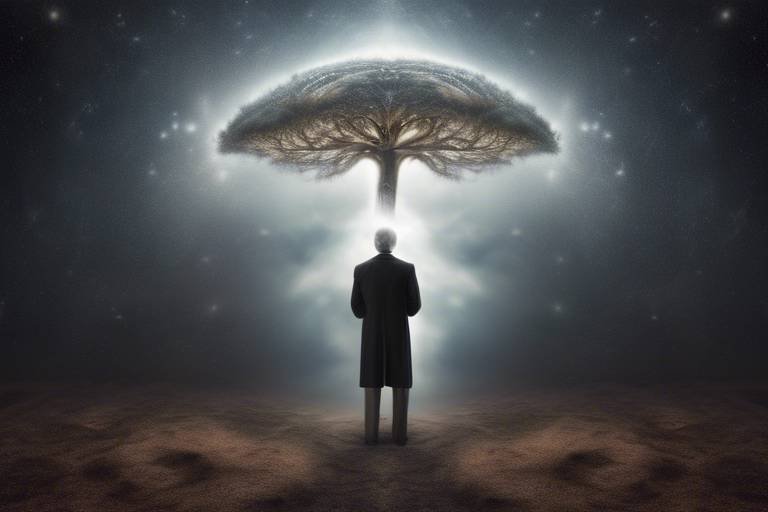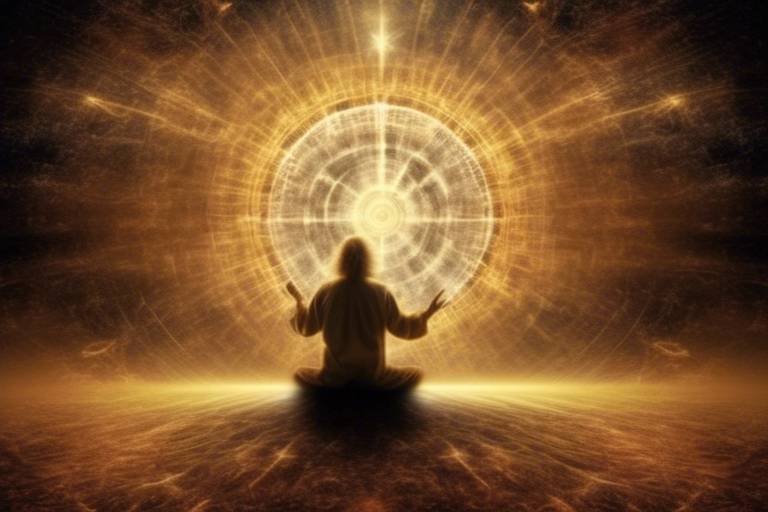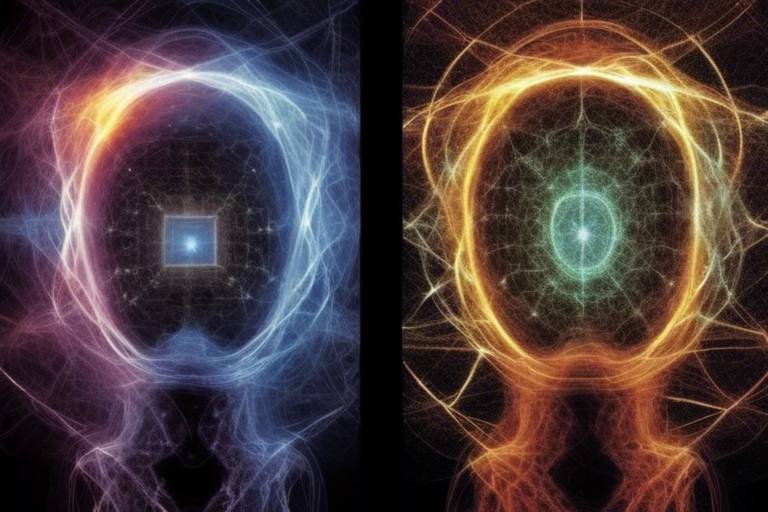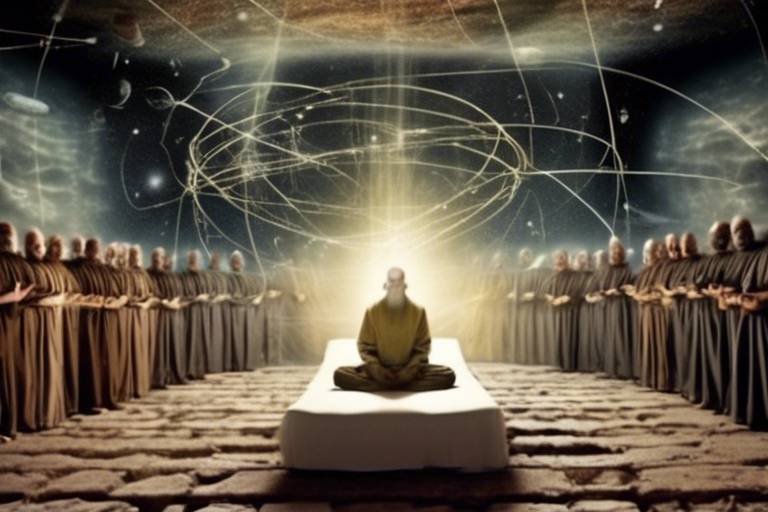Metaphysics - Quantum Uncertainty and the Nature of Reality
Welcome to the fascinating intersection of metaphysics and quantum mechanics, where the very fabric of reality is woven with threads of uncertainty and mystery. You might be wondering, how can something as abstract as metaphysics intertwine with the precise and often perplexing world of quantum physics? Well, buckle up, because we are about to embark on a journey that challenges our fundamental understanding of existence itself. At its core, metaphysics seeks to answer the big questions: What is real? What exists beyond our physical perception? And as we delve into quantum mechanics, we find that these questions are not just philosophical musings but are deeply tied to the very nature of the universe.
The relationship between quantum uncertainty and metaphysical inquiry is akin to a dance—sometimes harmonious, sometimes chaotic, but always intriguing. Quantum mechanics, with its strange behaviors and counterintuitive principles, compels us to reconsider our notions of reality. Imagine standing at the edge of a vast ocean, where each wave represents a different possibility of existence. As we dive deeper into this ocean, we encounter the concepts of wave-particle duality, superposition, and the observer effect, all of which serve as gateways to understanding how quantum phenomena challenge traditional metaphysical views.
As we explore these concepts, we'll discover that quantum mechanics isn't just a set of equations or experimental results; it's a profound commentary on the nature of reality itself. The uncertainty inherent in quantum mechanics suggests that reality is not as fixed as we once thought. Instead, it may be more like a fluid tapestry, constantly shifting and evolving based on observation and interaction. This realization raises even more questions: If reality is influenced by observation, what does that mean for our understanding of existence? Are we mere spectators in a grand play, or do our perceptions actively shape the narrative of reality?
In this article, we will navigate through the foundational principles of metaphysics and quantum mechanics, examining how they converge and diverge in their quest to understand the nature of reality. From discussing the historical development of metaphysics to unpacking the complexities of quantum uncertainty, we aim to provide a comprehensive overview that not only informs but also inspires curiosity. So, let’s take the plunge into this enigmatic realm where philosophy meets physics, and together, we’ll uncover the intricate relationship between quantum uncertainty and the very essence of existence.
- What is the main focus of metaphysics? Metaphysics primarily deals with the nature of reality, existence, and the fundamental principles that govern the universe beyond physical observation.
- How does quantum mechanics relate to metaphysics? Quantum mechanics introduces concepts like uncertainty and observer effects, prompting a reevaluation of traditional metaphysical views about reality.
- What is wave-particle duality? Wave-particle duality refers to the phenomenon where particles, such as electrons, exhibit both wave-like and particle-like properties, challenging our conventional understanding of matter.
- What is the observer effect? The observer effect suggests that the act of observation can influence the state of a quantum system, raising questions about the role of consciousness in shaping reality.

The Foundations of Metaphysics
Metaphysics, at its core, is the branch of philosophy that delves into the fundamental nature of reality and existence. It asks the big questions that often leave us pondering late at night: What is there? What is it like? How do we know what we know? Historically, metaphysics has evolved through various stages, influenced by thinkers from Aristotle to Kant, each contributing layers of complexity and insight to our understanding of the universe.
In its early days, metaphysics was closely tied to the study of being and existence. Aristotle famously defined it as "the study of being qua being," indicating that metaphysics seeks to understand the essence of things beyond their physical attributes. This pursuit of knowledge has led to significant philosophical debates about the nature of reality, the existence of universals, and the relationship between mind and matter. Over the centuries, metaphysics has branched into several sub-disciplines, including ontology (the study of being), cosmology (the study of the universe), and epistemology (the study of knowledge). Each of these fields plays a crucial role in shaping our understanding of reality.
One of the significant contributions of metaphysics is its ability to challenge our perceptions of reality. For instance, consider how metaphysical discussions about the nature of time and space have evolved. In classical physics, time was seen as linear and absolute, a constant that ticked away regardless of human experience. However, with the advent of modern physics and theories like relativity, our understanding has shifted dramatically. Time is now understood as a flexible dimension that can be influenced by speed and gravity, prompting metaphysicians to reconsider what time truly is.
Moreover, metaphysics is not just an abstract field; it has practical implications for how we live our lives. It influences our ethics, our understanding of consciousness, and even our scientific inquiries. For example, the question of whether reality is objective or subjective can shape everything from moral frameworks to the way we interpret scientific data. In this sense, metaphysics acts as a foundational pillar, supporting the entire structure of human thought and inquiry.
As we delve deeper into the intricate relationship between metaphysics and quantum mechanics, it becomes clear that the questions posed by metaphysics are not just philosophical musings; they are essential to understanding the very fabric of reality itself. The exploration of quantum uncertainty, wave-particle duality, and the observer effect all challenge traditional metaphysical views, pushing us to rethink what we believe about existence. In this way, metaphysics serves as both a guide and a challenge, urging us to explore the unknown while questioning the very nature of knowledge itself.
In summary, the foundations of metaphysics offer a rich tapestry of ideas and inquiries that have evolved over centuries. It challenges us to think critically about our existence and the universe around us. As we continue to explore the intersections of metaphysics and quantum mechanics, we find ourselves on a journey of discovery that not only deepens our understanding of reality but also enriches our experience of life itself.

Quantum Mechanics: An Introduction
Quantum mechanics is a fascinating field that delves deep into the very fabric of reality. It challenges our traditional understanding of the universe, pushing the boundaries of what we consider possible. At its core, quantum mechanics reveals that the universe operates on principles that are often counterintuitive to our everyday experiences. Imagine a world where particles can exist in multiple states at once or where the mere act of observing something can change its behavior. This is the realm of quantum mechanics, where uncertainty reigns supreme.
Key principles of quantum mechanics, such as wave-particle duality and superposition, serve as the backbone of this intriguing science. Wave-particle duality suggests that particles, like electrons, can behave both as particles and as waves, depending on how they are observed. This duality opens up a myriad of questions about the nature of reality. Are particles inherently one or the other, or do they exist in a state of flux until we measure them? Superposition, on the other hand, posits that particles can exist in multiple states simultaneously until an observation is made. This notion is akin to flipping a coin and it being both heads and tails at the same time until you take a look.
One of the most captivating aspects of quantum mechanics is its implications for the nature of reality. Unlike classical physics, which operates under the assumption that objects have definite properties, quantum mechanics introduces a level of uncertainty that forces us to reconsider our understanding of existence. It suggests that reality is not as straightforward as it seems; rather, it is a complex interplay of probabilities and potentialities. This uncertainty can be unsettling, yet it also opens up a universe of possibilities.
To better understand these concepts, let’s break down some of the fundamental principles of quantum mechanics:
- Wave-Particle Duality: Particles can behave like waves, exhibiting interference patterns, or like particles, demonstrating localized impacts. This duality is a cornerstone of quantum theory.
- Superposition: A quantum system can exist in multiple states at once. For example, an electron can spin both up and down until measured.
- Entanglement: Particles can become entangled, meaning the state of one particle instantly influences the state of another, regardless of the distance separating them.
These principles not only challenge our understanding of physics but also raise profound philosophical questions. What does it mean for something to exist if it can be in multiple states at once? How does our observation affect the reality we perceive? As we delve deeper into the world of quantum mechanics, we find ourselves at the intersection of science and philosophy, where the lines between reality and perception blur.
In conclusion, quantum mechanics is not just a collection of theories; it is a radical rethinking of the nature of reality itself. It invites us to explore the unknown and embrace the uncertainty that comes with it. As we continue to investigate the quantum realm, we uncover not just the secrets of the universe but also insights into our own existence.
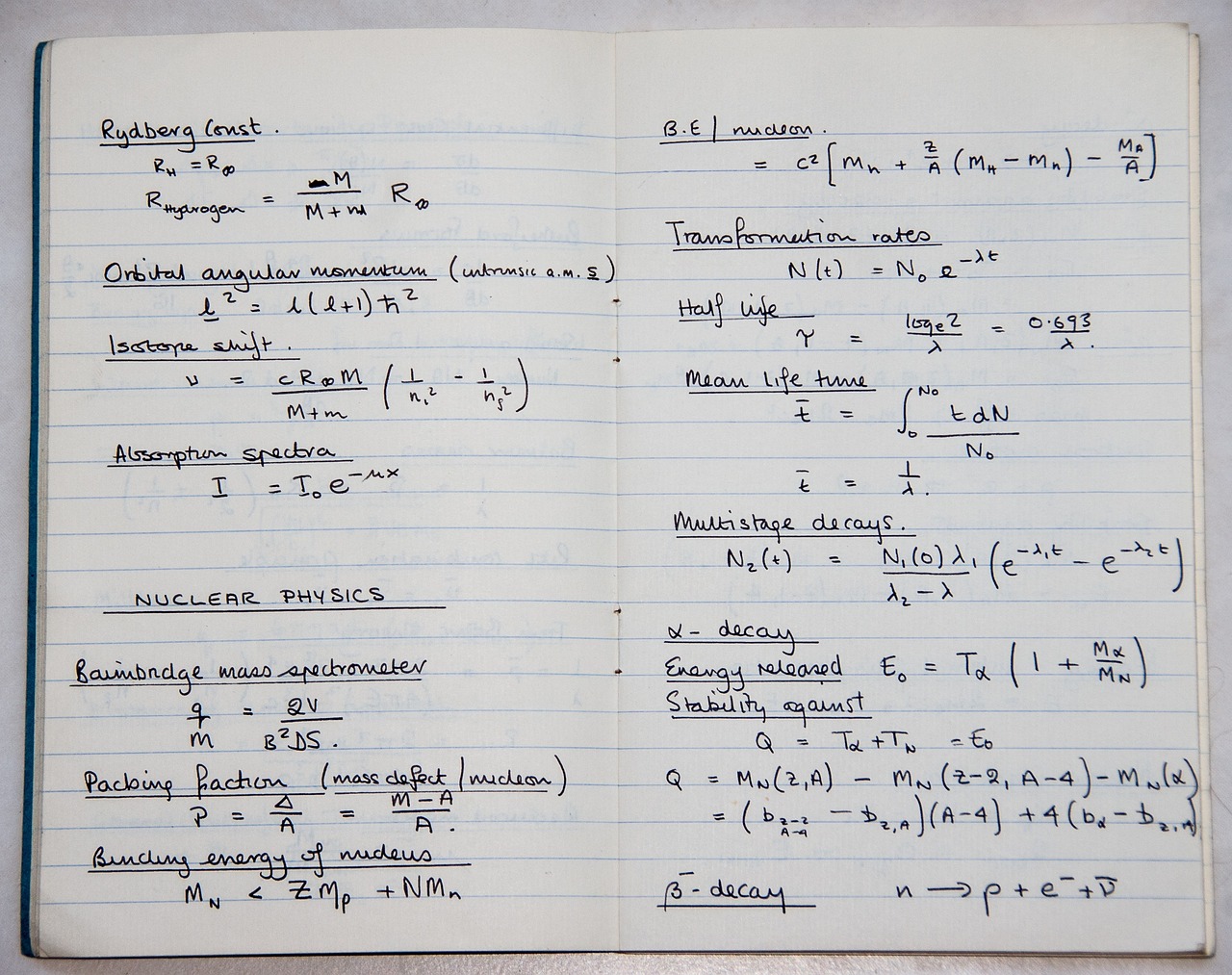
Wave-Particle Duality
Wave-particle duality is one of the most fascinating concepts in quantum mechanics, and it challenges our traditional views of reality in ways that can be both mind-bending and exhilarating. Imagine a world where particles—like electrons and photons—don’t just behave like tiny balls zipping around, but also act like waves, spreading out and interfering with one another. This duality means that at different times and under different conditions, these particles can show properties of either waves or particles, depending on how we observe them. It's as if they’re playing a cosmic game of hide-and-seek, revealing their true nature only when we look closely.
The implications of this phenomenon are profound. For instance, consider the famous double-slit experiment. When light or electrons are fired at a barrier with two slits, they create an interference pattern on a screen behind the barrier—just like waves would. However, if we try to measure which slit the particle goes through, the interference pattern disappears, and they behave like particles instead. This experiment isn't just a quirky lab trick; it raises serious questions about the nature of reality itself. Are particles real entities, or are they merely probabilities waiting to be observed? What does this mean for our understanding of existence?
To further illustrate wave-particle duality, let’s look at a simple comparison in the table below:
| Property | Wave Behavior | Particle Behavior |
|---|---|---|
| Interference | Can create patterns (e.g., light waves) | No interference pattern |
| Location | Spread out over space | Localized at a point |
| Measurement | Can exist in multiple states | Has definite properties when measured |
As we delve deeper into this duality, we must consider the philosophical implications. If particles can exist in multiple states until observed, what does that say about our understanding of reality? Are we, as observers, shaping the universe around us simply by the act of looking? This intertwining of observation and reality challenges the very foundation of metaphysics, pushing us to rethink what existence truly means. In a sense, it’s like asking if a tree falling in a forest makes a sound if no one is there to hear it—does reality exist independently of our perception?
In conclusion, wave-particle duality invites us into a realm of uncertainty and wonder, where the boundaries between reality and perception blur. It’s a reminder that the universe is far more complex than our senses can grasp, and that perhaps, the act of observing is itself a part of the cosmic dance of existence. As we continue to explore these concepts, we might just find that the nature of reality is as fluid and dynamic as the waves and particles that inhabit it.

Experimental Evidence
To truly grasp the astonishing implications of wave-particle duality, we must delve into the experimental evidence that has emerged from the world of quantum mechanics. One of the most famous experiments that illustrates this phenomenon is the double-slit experiment. Picture this: when light or particles, such as electrons, are fired at a barrier with two slits, an unexpected result occurs. Instead of behaving like solid particles, they create an interference pattern on a screen behind the barrier, much like waves do when they overlap. This striking pattern suggests that each particle is behaving as a wave, passing through both slits simultaneously, creating a wave-like interference pattern.
However, the plot thickens! When we introduce an observer to the experiment—by measuring which slit the particle goes through—the interference pattern disappears. The particles then behave like discrete entities, creating two distinct bands on the screen, as if they had chosen a side. This phenomenon leads us to ponder: does the act of observation influence reality itself? It raises the question of whether reality exists independently of our perception or is inherently tied to our consciousness.
The implications of these experiments extend beyond mere curiosity; they challenge our fundamental understanding of reality. The double-slit experiment is not just a quirky aspect of quantum physics; it serves as a cornerstone for discussions about the nature of existence. Below, we summarize the key findings from this and other significant experiments that shed light on the dual nature of particles:
| Experiment | Description | Key Finding |
|---|---|---|
| Double-Slit Experiment | Particles create an interference pattern when not observed. | Observation collapses the wave function, altering behavior. |
| Quantum Eraser Experiment | Allows for the "erasure" of which-path information. | Reinstates interference pattern when observer information is erased. |
| Bell's Theorem Experiments | Tests the predictions of quantum mechanics against local realism. | Supports non-locality, suggesting entangled particles affect each other instantly. |
These experiments not only provide compelling evidence for wave-particle duality but also challenge our classical intuitions about the universe. They suggest that at a fundamental level, reality may be far more complex than it appears. The results compel us to reconsider the role of the observer in the quantum realm. Are we mere spectators in a deterministic universe, or do we play an active role in shaping reality? This question leads us into deeper philosophical discussions about existence and consciousness.
As we continue to explore these experimental findings, we must also acknowledge the broader implications they have for metaphysics. The mysteries of quantum mechanics invite us to rethink our assumptions about the nature of reality, existence, and the universe itself. Are we prepared to embrace a world where uncertainty reigns, and the very act of observation alters the fabric of reality? The journey into the heart of quantum mechanics is just beginning, and the answers may be more surprising than we ever imagined.
- What is wave-particle duality? Wave-particle duality is the concept that particles, such as photons and electrons, exhibit both wave-like and particle-like properties depending on the experimental conditions.
- What does the double-slit experiment demonstrate? The double-slit experiment demonstrates that particles can behave like waves, creating interference patterns, but collapse into distinct particles when observed.
- How does observation affect quantum systems? Observation can alter the state of a quantum system, suggesting that reality may not be independent of our perception.
- What are the implications of quantum mechanics for metaphysics? Quantum mechanics challenges traditional metaphysical views, raising questions about the nature of existence, reality, and the role of consciousness.

Philosophical Implications
The philosophical implications of wave-particle duality are nothing short of revolutionary. Imagine standing at the edge of a vast ocean, where each wave represents a potential reality, and each particle is a drop that can manifest in countless ways. This duality challenges our very understanding of existence, pushing us to reconsider what we mean by "reality." Traditionally, reality has been viewed as a concrete, objective entity, something that exists independently of our perception. However, wave-particle duality introduces a twist to this narrative, suggesting that the act of observation plays a crucial role in defining what is real.
One of the most profound implications of this duality is the idea that reality is not merely a backdrop against which events unfold but is, in fact, a participant in the cosmic dance of existence. When we observe a quantum particle, we are not just passive spectators; we are actively shaping the outcome. This leads to a tantalizing question: if our consciousness can influence the physical world, what does that say about the nature of existence itself? Are we, as observers, co-creators of reality, or do we merely uncover what is already there?
Furthermore, the philosophical ramifications extend into the realm of determinism and free will. If particles exist in a state of superposition, where they can be in multiple states simultaneously until observed, does this imply that our choices are equally uncertain? Are we simply navigating a predetermined path, or do we possess the agency to shape our destiny? The interplay between quantum mechanics and metaphysics invites us to ponder these questions, challenging the very foundations of our beliefs about autonomy and the nature of choice.
To encapsulate these philosophical implications, consider the following key points:
- Reality as a Construct: Wave-particle duality suggests that reality may not be an objective truth but rather a construct influenced by our observations.
- The Role of the Observer: The observer effect highlights the active role of consciousness in shaping outcomes, blurring the lines between subject and object.
- Determinism vs. Free Will: The uncertainty inherent in quantum mechanics raises questions about the nature of free will and whether our choices are predetermined or genuinely free.
In summary, the philosophical implications of wave-particle duality compel us to rethink our understanding of reality. They challenge us to explore the intricate relationship between observer and observed, existence and consciousness. As we delve deeper into the mysteries of quantum mechanics, we find ourselves not just as passive observers in the universe but as active participants in a reality that is far more complex and interconnected than we ever imagined.
- What is wave-particle duality? Wave-particle duality refers to the phenomenon where particles, such as electrons and photons, exhibit both wave-like and particle-like properties depending on how they are observed.
- How does wave-particle duality affect our understanding of reality? It challenges the notion of an objective reality by suggesting that observation plays a crucial role in determining the state of a system.
- What are the philosophical implications of quantum mechanics? Quantum mechanics raises questions about the nature of existence, free will, and the role of consciousness in shaping reality.

Superposition and Entanglement
When we delve into the fascinating world of quantum mechanics, two concepts stand out as particularly mind-bending: superposition and entanglement. These principles not only challenge our understanding of reality but also invite us to reconsider the very fabric of existence. So, what exactly are superposition and entanglement, and why do they matter?
To put it simply, superposition refers to the ability of quantum particles to exist in multiple states at once. Imagine flipping a coin; it can either be heads or tails. But in the quantum realm, a particle can be in a state of both heads and tails simultaneously until it's observed. This is akin to being in a dream where you can be in multiple places at once, only to wake up and find yourself in a single reality. It's a perplexing idea that suggests reality is not as straightforward as we perceive it.
Now, let's talk about entanglement. This phenomenon occurs when two or more particles become linked in such a way that the state of one instantly influences the state of the other, regardless of the distance separating them. Imagine you have two entangled dice: if you roll one and it lands on a six, the other will instantly show a six too, even if it's on the other side of the universe! This mysterious connection raises profound questions about the nature of reality and the limits of our understanding.
To illustrate the significance of superposition and entanglement, consider the following table that summarizes their key aspects:
| Concept | Description | Implications |
|---|---|---|
| Superposition | A particle exists in multiple states simultaneously. | Challenges the idea of a single, observable reality. |
| Entanglement | Particles are interconnected, influencing each other instantly. | Questions the nature of space and time, suggesting non-locality. |
The implications of these concepts extend beyond the realm of physics and into the philosophical. If particles can exist in multiple states and remain interconnected in ways we cannot fully comprehend, what does that say about our perception of reality? Are we merely observers in a grand cosmic play, where the script is written by the quantum dance of particles? Or do our observations and consciousness play a role in shaping that reality?
In essence, superposition and entanglement challenge the classical view of a deterministic universe. They invite us to explore a more complex and interconnected reality, where the observer is not separate from the observed. As we continue to uncover the mysteries of quantum mechanics, we may find that the relationship between reality and existence is far more intricate than we ever imagined.
- What is superposition in quantum mechanics?
Superposition is the principle that a quantum system can exist in multiple states at the same time until it is measured or observed. - What is entanglement?
Entanglement is a phenomenon where two or more quantum particles become linked, such that the state of one particle instantly affects the state of the other, no matter the distance between them. - How do superposition and entanglement affect our understanding of reality?
These concepts challenge the classical view of reality, suggesting that it is not as fixed and observable as we once thought, but rather a complex interplay of possibilities and connections.

The Observer Effect
The concept of the Observer Effect in quantum mechanics is nothing short of a mind-bending revelation that forces us to reconsider our understanding of reality. At its core, this phenomenon suggests that the mere act of observation can influence the state of a quantum system. Imagine peering into a mysterious box; just your curiosity can change what’s inside. This idea challenges our traditional views, where we often assume that reality exists independently of our perceptions. Instead, quantum mechanics proposes a much more intertwined relationship between the observer and the observed.
To grasp the implications of the observer effect, let’s take a closer look at how it operates. When a quantum system, such as an electron, is not being observed, it exists in a state of probabilities. However, the moment we attempt to measure or observe it, the system collapses into a definite state. This phenomenon raises profound questions: Are we shaping reality with our consciousness? Does the universe require an observer to manifest its potential? These questions are not just philosophical musings; they delve into the very fabric of existence itself.
Consider the classic analogy of a tree falling in a forest. If there’s no one around to hear it, does it make a sound? In the quantum realm, the observer effect suggests that the answer might be more complex than we think. Just like the tree, quantum particles may exist in multiple states until they are observed, at which point they 'choose' a state to manifest. This leads us to ponder the role of consciousness in shaping reality. Are we passive witnesses, or do we actively participate in the creation of the universe?
Furthermore, the observer effect invites us to explore the intricate relationship between consciousness and reality. Some theorists argue that consciousness itself might be a fundamental component of the universe, akin to space and time. This idea is echoed in various metaphysical interpretations of quantum mechanics, where consciousness is not merely a byproduct of brain activity but a key player in the cosmic game.
As we navigate through these profound questions, it's important to consider the implications of the observer effect in practical terms. For instance, in experiments involving quantum entanglement, the act of measuring one particle can instantaneously affect another, regardless of the distance between them. This phenomenon, often referred to as 'spooky action at a distance,' further complicates our understanding of locality and reality.
In summary, the observer effect is a fascinating aspect of quantum mechanics that challenges our perceptions of reality. It suggests that our observations are not merely passive acts but rather contribute to the unfolding of the universe. As we continue to explore the depths of quantum mechanics, we must remain open to the possibility that our understanding of reality is not as fixed as we once believed.
- What is the observer effect? The observer effect refers to the phenomenon where the act of observing a quantum system alters its state.
- How does the observer effect challenge traditional views of reality? It suggests that reality may not exist independently of observation, implying a more complex relationship between the observer and the observed.
- Can consciousness influence reality? Some interpretations of quantum mechanics propose that consciousness plays a fundamental role in shaping reality, although this remains a topic of debate.

Consciousness and Reality
When we dive into the fascinating interplay between consciousness and reality, we find ourselves standing at the edge of a profound mystery. Imagine consciousness as a lens through which we view the world; it shapes our perceptions, influences our thoughts, and ultimately colors our understanding of existence itself. But what if this lens is not merely a passive observer? What if it actively participates in shaping the reality we experience? This tantalizing idea challenges the very fabric of our understanding of both consciousness and the nature of reality.
At its core, the relationship between consciousness and reality raises a fundamental question: Is reality something that exists independently of our perception, or is it intrinsically linked to our conscious experience? To explore this, let’s consider a few key points:
- Perception as Reality: Our senses provide us with information about the world, but they can be deceiving. Think about optical illusions; they show us that what we perceive isn't always the same as what is real. This suggests that our consciousness plays a critical role in constructing our reality.
- The Role of Attention: What we focus on can alter our experience of reality. For instance, when we are engrossed in a task, we may become oblivious to our surroundings, highlighting how consciousness can filter out aspects of reality.
- Consciousness and Quantum Mechanics: Some interpretations of quantum mechanics, like the Copenhagen interpretation, imply that consciousness may play a role in determining the state of a quantum system. This notion leads to the idea that reality could be influenced by our awareness.
Furthermore, consider the implications of quantum entanglement. This phenomenon suggests that particles can become interconnected in ways that transcend classical understanding. If consciousness is indeed intertwined with quantum processes, could it be that our thoughts and intentions have a more significant impact on reality than we realize? This question opens up a plethora of philosophical debates, inviting us to reconsider the boundaries of existence.
In essence, the exploration of consciousness and reality isn’t just a philosophical endeavor; it’s a journey into the very nature of who we are. Are we merely observers in a vast universe, or are we active participants in its unfolding? As we ponder these questions, we find ourselves not only at the intersection of science and philosophy but also at the heart of what it means to exist. The more we delve into this relationship, the more we realize that our understanding of reality may be as fluid and dynamic as the consciousness that perceives it.
Q: How does consciousness influence our perception of reality?
A: Consciousness acts as a filter, shaping how we interpret sensory information and experiences, which in turn influences our understanding of reality.
Q: Can reality exist independently of consciousness?
A: This is a debated topic; some argue that reality is objective and exists independently, while others believe that consciousness plays a crucial role in defining it.
Q: What is the significance of quantum mechanics in understanding consciousness?
A: Quantum mechanics introduces concepts like superposition and entanglement, which suggest that consciousness may have a more profound connection to reality than previously thought.

Metaphysical Interpretations of Quantum Mechanics
When we dive into the realm of quantum mechanics, we find ourselves not just grappling with complex equations and experimental results, but also wrestling with profound philosophical questions. These questions lead us to the heart of metaphysics, where we seek to understand the very nature of reality itself. Quantum mechanics, with its strange behaviors and counterintuitive principles, has given rise to various interpretations that challenge our traditional views of existence.
One of the most significant interpretations is the Copenhagen interpretation. This perspective posits that quantum particles do not possess definite properties until they are measured. Imagine a coin spinning in the air; while it spins, it is neither heads nor tails, but a superposition of both. Only when it lands does it take on a specific state. This analogy highlights how the act of observation plays a critical role in determining the state of a quantum system, leading us to question the existence of an objective reality independent of observers. If reality is contingent upon observation, what does that say about our understanding of existence?
On the other hand, we have the Many-Worlds interpretation, which takes a more radical approach. This theory suggests that all possible outcomes of quantum measurements actually exist, but in separate, parallel realities. Each time a quantum event occurs, the universe splits into multiple branches, each representing a different outcome. For instance, when you flip that coin, one universe sees it land on heads, while another sees it land on tails. This interpretation not only complicates our understanding of reality but also raises profound questions about existence itself. Are we merely one of countless versions of ourselves, living out different possibilities across infinite universes?
To further illustrate these interpretations, consider the following table:
| Interpretation | Description | Implications |
|---|---|---|
| Copenhagen Interpretation | Particles exist in a superposition of states until observed. | Challenges the notion of an objective reality. |
| Many-Worlds Interpretation | All possible outcomes exist in parallel universes. | Questions the uniqueness of existence. |
These interpretations not only reshape our understanding of the quantum world but also invite us to reconsider the very fabric of reality. As we ponder these ideas, we cannot help but ask ourselves: What does it mean to exist? Is our reality merely a projection of our consciousness, or is there something more profound at play?
Ultimately, the metaphysical interpretations of quantum mechanics serve as a bridge between science and philosophy. They compel us to confront the mysteries of existence and challenge us to think beyond the confines of traditional metaphysical categories. As we continue to explore these concepts, we may find that the answers we seek are as elusive as the particles we study.
- What is the Copenhagen interpretation? It suggests that quantum particles do not have definite properties until they are measured.
- What does the Many-Worlds interpretation imply? It posits that all possible outcomes of quantum events exist in parallel realities.
- How do these interpretations affect our understanding of reality? They challenge the notion of an objective reality and invite us to reconsider the nature of existence.
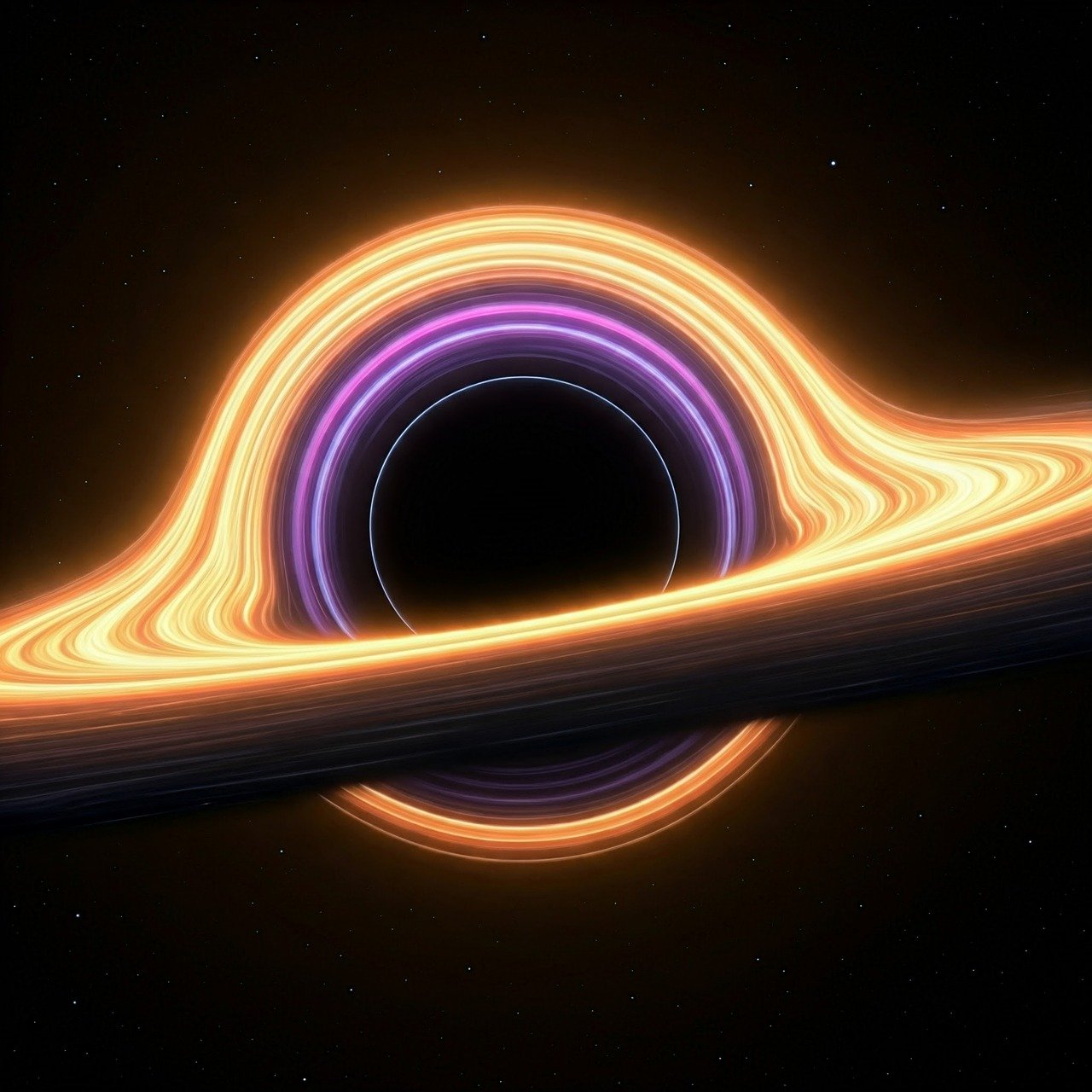
The Copenhagen Interpretation
The Copenhagen Interpretation is one of the most widely discussed interpretations of quantum mechanics, and it fundamentally challenges our understanding of reality. Proposed primarily by physicists Niels Bohr and Werner Heisenberg in the early 20th century, this interpretation suggests that quantum particles do not possess definite properties until they are measured. Imagine a coin spinning in the air; while it spins, it is neither heads nor tails, but rather a superposition of both. It's only when you catch it that it 'decides' on a state. This analogy encapsulates the essence of the Copenhagen Interpretation.
At its core, the Copenhagen Interpretation posits that the act of measurement collapses the wave function, a mathematical description of the quantum state. This collapse results in the particle taking on a definite state. This raises profound questions: If reality is dependent on observation, what does that say about the nature of existence itself? Are we mere observers, or do we play an active role in shaping reality? The implications of this interpretation extend beyond physics and seep into the realms of philosophy and metaphysics.
Critics of the Copenhagen Interpretation argue that it introduces a level of subjectivity into the physical world. They contend that if reality is contingent upon observation, then it undermines the idea of an objective universe that exists independently of our perceptions. To illustrate this point, consider the following table that summarizes key features of the Copenhagen Interpretation compared to classical physics:
| Aspect | Copenhagen Interpretation | Classical Physics |
|---|---|---|
| Reality | Dependent on observation | Objective and independent |
| Particle State | Indeterminate until measured | Definite at all times |
| Wave Function | Collapses upon observation | No concept of collapse |
This table highlights not just the differences in understanding reality but also the philosophical ramifications that arise from accepting the Copenhagen Interpretation. If we consider the universe as a stage, the act of observation becomes the spotlight that brings certain elements into focus while leaving others in the shadows. This leads us to ponder: Are we the directors of our reality, or merely spectators?
Moreover, the Copenhagen Interpretation has sparked numerous debates and discussions among physicists and philosophers alike. Some argue that it offers a pragmatic approach to dealing with the peculiarities of quantum mechanics, while others feel it fails to provide a comprehensive understanding of the underlying reality. The interpretation has also led to the development of alternative theories, such as the Many-Worlds Interpretation, which posits that all possible outcomes of quantum measurements exist in parallel realities.
Ultimately, the Copenhagen Interpretation serves as a reminder of the complexities and mysteries that lie at the intersection of quantum mechanics and metaphysics. It challenges us to reconsider our assumptions about reality, existence, and the role of consciousness in shaping the universe. As we delve deeper into the quantum realm, we may find that the questions it raises are as significant as the answers it provides.
- What is the Copenhagen Interpretation?
It is an interpretation of quantum mechanics that suggests particles do not have definite properties until they are measured.
- Who proposed the Copenhagen Interpretation?
Niels Bohr and Werner Heisenberg were the main proponents of this interpretation.
- How does the Copenhagen Interpretation differ from classical physics?
While classical physics posits an objective reality independent of observation, the Copenhagen Interpretation suggests that reality is dependent on observation.
- What are the implications of this interpretation on our understanding of reality?
The interpretation raises questions about the nature of existence and the role of consciousness in shaping reality.

The Many-Worlds Interpretation
The Many-Worlds Interpretation (MWI) of quantum mechanics is a mind-bending concept that suggests every possible outcome of a quantum event actually occurs in its own separate universe. Imagine standing at a fork in the road; in one universe, you take the left path, while in another, you choose the right. This interpretation challenges our traditional understanding of reality, suggesting that rather than a single timeline, there exists a vast multiverse brimming with countless realities, each branching off with every quantum decision made.
Developed by physicist Hugh Everett III in the 1950s, the Many-Worlds Interpretation was a response to the perplexing nature of quantum mechanics, particularly the wave function collapse that occurs during measurement. In classical physics, we expect a single outcome when we observe a system. However, MWI posits that all potential outcomes are realized, leading to a reality where every possibility is actualized. This idea can be both exhilarating and daunting, as it implies an infinite number of versions of ourselves, each living out different choices and experiences.
One of the most fascinating aspects of MWI is how it addresses the concept of probability in quantum mechanics. Instead of collapsing into a single outcome, the wave function remains in a superposition of states, with each possibility manifesting in a different universe. This means that when we measure a quantum system, we are merely observing one of the many branches of reality. The other outcomes continue to exist, albeit in their own separate dimensions. This leads to profound implications for our understanding of existence, free will, and the nature of consciousness.
To better understand the implications of the Many-Worlds Interpretation, consider the following key points:
- Multiplicity of Outcomes: Every quantum event leads to multiple outcomes, each occurring in its own universe.
- Elimination of Wave Function Collapse: Unlike traditional interpretations, MWI does not require the wave function to collapse upon observation.
- Philosophical Ramifications: MWI raises questions about identity, existence, and the nature of reality itself.
While the Many-Worlds Interpretation is a captivating theory, it is not without its critics. Some argue that it leads to an extravagant proliferation of realities, making it difficult to comprehend or test scientifically. Others contend that it complicates our understanding of the universe without providing clear advantages over more conventional interpretations. Yet, as we dive deeper into the quantum realm, the allure of MWI continues to spark debate and intrigue among physicists and philosophers alike.
In conclusion, the Many-Worlds Interpretation invites us to reconsider our place in the cosmos. It suggests that every decision we make, every quantum event we encounter, spawns a new universe. This perspective not only challenges our understanding of reality but also encourages us to ponder the vastness of existence. Are we merely observers in a singular reality, or are we part of an infinite tapestry of possibilities? The answer may lie in the ever-expanding fabric of the multiverse, waiting for us to explore its mysteries.
- What is the Many-Worlds Interpretation? The Many-Worlds Interpretation is a theory in quantum mechanics suggesting that all possible outcomes of a quantum event occur in separate, parallel universes.
- Who proposed the Many-Worlds Interpretation? The Many-Worlds Interpretation was proposed by physicist Hugh Everett III in 1957.
- How does MWI differ from other interpretations of quantum mechanics? Unlike other interpretations, MWI does not involve wave function collapse; instead, it posits that all outcomes exist simultaneously in a multiverse.
- What are the implications of MWI for free will? MWI raises questions about free will, suggesting that every choice leads to a branching of realities, where each possible decision is realized.
Frequently Asked Questions
- What is metaphysics and why is it important?
Metaphysics is a branch of philosophy that explores the fundamental nature of reality, existence, and the universe. It seeks to answer questions about what things are and why they exist, going beyond mere physical observation. Understanding metaphysics is crucial as it lays the groundwork for many philosophical inquiries and helps us grasp concepts that are not easily explained through empirical means.
- What is quantum mechanics?
Quantum mechanics is a fundamental theory in physics that describes the behavior of matter and energy at the smallest scales, such as atoms and subatomic particles. It introduces concepts like wave-particle duality and superposition, which challenge our traditional understanding of how particles behave and interact. Essentially, it reveals a world that is far more complex and unpredictable than our everyday experiences suggest.
- What is wave-particle duality?
Wave-particle duality is a key principle in quantum mechanics that states particles, like electrons and photons, can exhibit both wave-like and particle-like properties. This duality means that depending on how we observe these particles, they can behave like waves or like discrete particles, leading to profound implications for our understanding of reality and the nature of existence itself.
- How does the observer effect influence our understanding of reality?
The observer effect refers to the phenomenon where the act of observation alters the state of a quantum system. This raises intriguing questions about the nature of reality: if our observation can change what we observe, how can we define an objective reality? It suggests that consciousness may play a crucial role in shaping the physical world, blurring the lines between observer and observed.
- What are the philosophical implications of quantum mechanics?
Quantum mechanics challenges traditional metaphysical views by suggesting that reality may not be as fixed and objective as we once thought. Interpretations like the Copenhagen interpretation propose that particles do not have definite properties until measured, while the many-worlds interpretation suggests that all possible outcomes exist simultaneously in parallel realities. These ideas force us to reconsider our understanding of existence and the nature of reality itself.
- Can you explain the Copenhagen interpretation?
The Copenhagen interpretation is one of the most widely discussed interpretations of quantum mechanics. It posits that quantum particles do not have definite properties until they are observed. This means that reality is not a fixed entity but is shaped by the act of measurement, leading to a more fluid understanding of existence where the observer plays a crucial role.
- What is the many-worlds interpretation?
The many-worlds interpretation proposes that all possible outcomes of quantum measurements actually occur, each in its own separate universe. This theory implies an infinite number of parallel realities coexisting alongside our own, where every decision or event branches into different outcomes. It challenges our conventional notions of existence and raises fascinating questions about the nature of reality.

